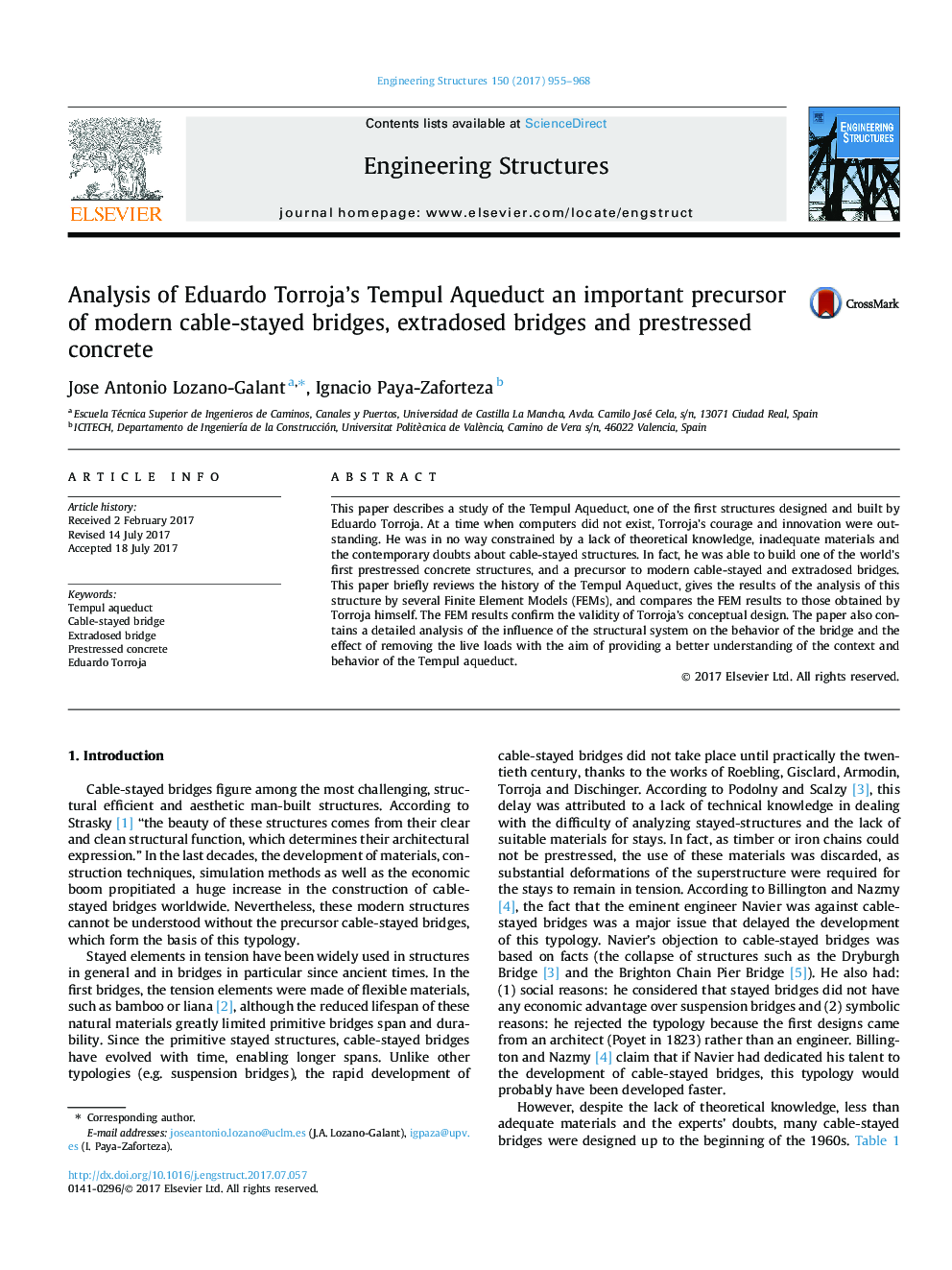| Article ID | Journal | Published Year | Pages | File Type |
|---|---|---|---|---|
| 4919883 | Engineering Structures | 2017 | 14 Pages |
Abstract
This paper describes a study of the Tempul Aqueduct, one of the first structures designed and built by Eduardo Torroja. At a time when computers did not exist, Torroja's courage and innovation were outstanding. He was in no way constrained by a lack of theoretical knowledge, inadequate materials and the contemporary doubts about cable-stayed structures. In fact, he was able to build one of the world's first prestressed concrete structures, and a precursor to modern cable-stayed and extradosed bridges. This paper briefly reviews the history of the Tempul Aqueduct, gives the results of the analysis of this structure by several Finite Element Models (FEMs), and compares the FEM results to those obtained by Torroja himself. The FEM results confirm the validity of Torroja's conceptual design. The paper also contains a detailed analysis of the influence of the structural system on the behavior of the bridge and the effect of removing the live loads with the aim of providing a better understanding of the context and behavior of the Tempul aqueduct.
Related Topics
Physical Sciences and Engineering
Earth and Planetary Sciences
Geotechnical Engineering and Engineering Geology
Authors
Jose Antonio Lozano-Galant, Ignacio Paya-Zaforteza,
